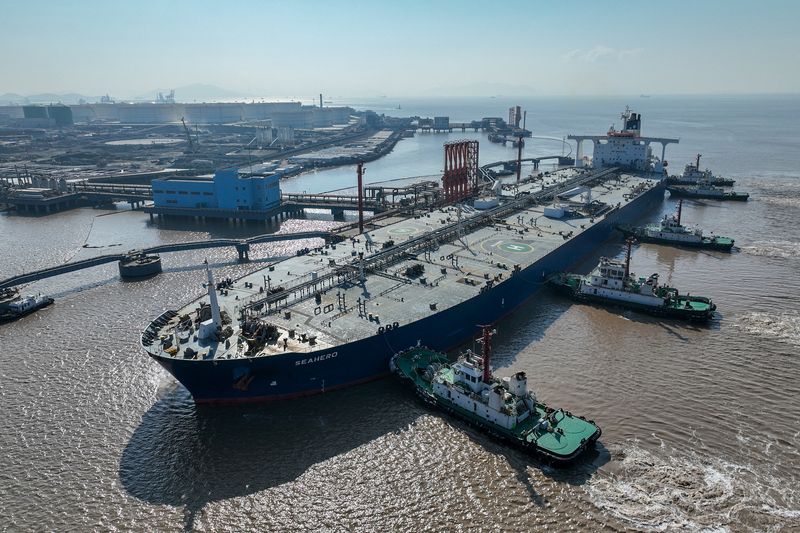By Laura Sanicola
(Reuters) -Oil fell on Friday as the release of some hostages in Gaza reduced the geopolitical risk premium, but prices notched their first week of gains in over a month ahead of next week's OPEC+ meeting to decide on production cuts in 2024.
Brent crude futures settled down 84 cents, or 1%, at $80.58 a barrel, while U.S. West Texas Intermediate crude fell $1.56, or 2%, from Wednesday's close to $75.54. There was no settlement for WTI on Thursday owing to the U.S. Thanksgiving holiday.
The first group of hostages freed from captivity in Gaza returned to Israel on Friday, on the first day of a planned four-day truce during which further exchanges of hostages for Palestinian detainees are due to take place.
"The fact that they followed through was significant for reducing the risk premium," said John Kilduff, partner at Again Capital LLC in New York.
Both contracts had their first weekly gain in five weeks as OPEC+ prepares for a meeting that will have output cuts high on the agenda after recent oil price declines on demand concerns and burgeoning supply, particularly from non-OPEC producers.
The OPEC+ group, comprising of the Organization of the Petroleum Exporting Countries and allies including Russia, surprised the market on Wednesday by delaying its Nov. 26 to Nov. 30 after producers struggled to reach a consensus on output levels.
OPEC+ has moved closer to a compromise with African oil producers on 2024 output levels, three OPEC+ sources have told Reuters.
"The most likely outcome now appears to be an extension of existing cuts," said IG analyst Tony Sycamore.
The surprise delay had initially brought Brent futures down as much as 4% and WTI by as much as 5% in intraday trading on Wednesday. Trading remained subdued during Thursday's U.S. holiday.
"While I wouldn't be entirely surprised to see leaks or comments over the weekend that still have an impact on the oil price on the open next week, the actual meeting now occurring Thursday could put traders' minds somewhat at ease," said Craig Erlam, senior market analyst at OANDA.
A bright spot came in the form of the near-term economic outlook in China. Recent Chinese data and fresh aid to the indebted property sector can be "positive for the oil market's near-term trend", said CMC Markets (LON:CMCX) analyst Tina Teng.
Yet those gains could be capped by higher U.S. crude stockpiles and poor refining margins, leading to weaker demand from U.S. refineries, analysts said.
"Fundamentals developments have been bearish with rising U.S. oil inventories," ANZ analysts said in a note.

Still, China's longer-term outlook remains lukewarm. Analysts say oil demand growth could weaken to about 4% in the first half of 2024 as the property sector crunch weighs on diesel use.
Non-OPEC production growth is set to remain strong, with Brazilian state energy company Petrobras planning to invest $102 billion over the next five years to boost output to 3.2 million barrels of oil equivalent per day (boepd) by 2028, up from 2.8 million boepd in 2024.